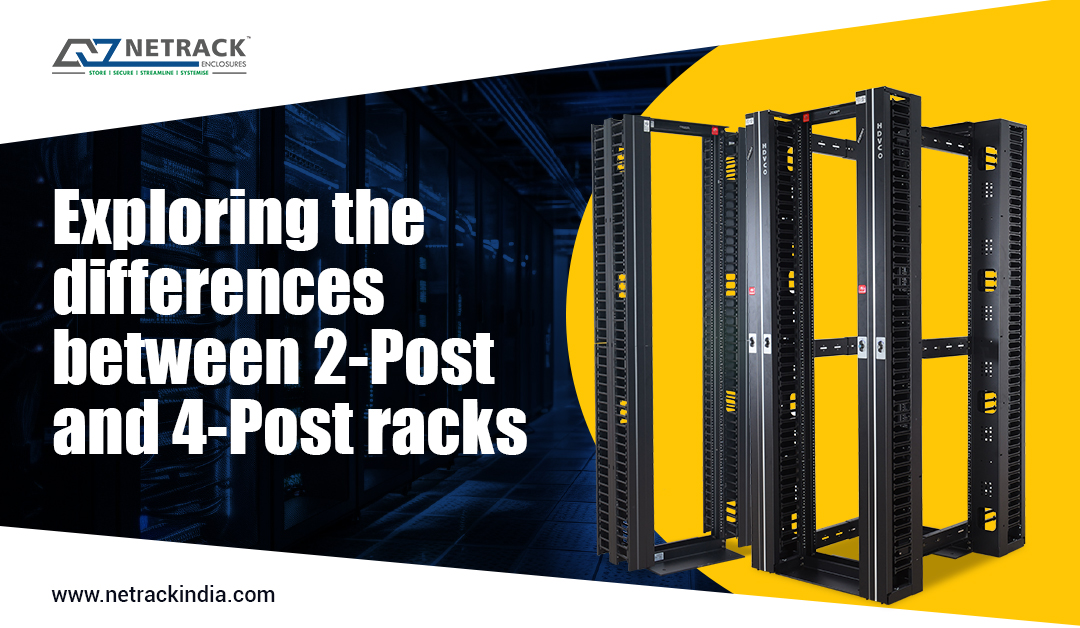
Exploring the differences between 2-Post and 4-Post racks
Exploring the differences between 2-Post and 4-Post racks
In the world of IT infrastructure, the rack is the backbone of any data center or networking setup since it holds and organizes the equipment. 2-post open racks, NRS & NRA 4 post open frames 600 wide racks and NRS & NRA 4 post open frames 800 wide racks are popular options in the networking industry. These racks serve distinct purposes, each catering to a specific load, stability, and cable management requirements.
Understanding 2-Post and 4-Post Racks
2-Post racks are commonly used to house networking equipment such as switches, routers, and patch panels. These devices are typically lightweight and have shallow depths, making 2-post racks suitable for installation. They have a simple design with two vertical posts at the front. They are also known as relay racks. They are commonly seen in telecommunication rooms, smaller data centers, or network closets where equipment only requires a small amount of depth or support. An efficient organization of networking components without excessive space is a cost-efficient solution. Their open design and accessibility make them suitable for setups that require regular adjustments while ensuring efficient ventilation and optimal device performance.
On the other hand, 4-post racks are more robust and versatile. They feature four vertical posts, allowing for increased stability and the ability to handle heavier and deeper equipment. In larger IT Setups, where various equipment with varying sizes and weights is consolidated, 4-post racks are a versatile option. These racks are suitable for housing servers, UPS units, storage devices, and other heavy-duty hardware. Their construction is designed to provide support at the equipment’s front and rear sides, ensuring optimal stability.
As equipment becomes more complex and numerous, cable management becomes crucial. Proper cable organization enhances airflow, reduces clutter, and aids in maintenance. 4-Post racks can handle the demands of extensive cabling setups using vertical and horizontal cable management solutions, ensuring organized and efficient cable routing.
Choosing the right solution for your needs
Hence 2-post racks are ideal for scenarios where the equipment isn’t too heavy or deep. Networking applications, such as patch panels, switches, and smaller communication devices, fit well within the confines of these racks. They are cost-effective solutions that offer easy access and ventilation.
When dealing with heavier equipment, especially those with greater depth, the stability offered by 4-post racks becomes essential. Servers, UPS units, and storage devices often require the additional support these racks provide. The ability to clamp the equipment in both the front and rear ensures that it remains secure and balanced, even in dynamic environments.
Unmask the difference and choose wisely!
The most noticeable difference lies in the stability provided. 4-post racks offer enhanced stability due to their design, which supports the equipment from all sides. This makes them suitable for equipment that might experience vibrations or movement. Also, 4-post racks can bear heavier loads compared to 2-post racks. This is crucial when dealing with high-capacity servers and other heavy equipment.
Netrack believes that since the rack choice ensures the physical well-being of the equipment and contributes to the overall efficiency and reliability of the IT infrastructure, careful evaluation is essential. The choice should depend upon the nature of the equipment. Additionally, cable management needs must be considered when selecting the rack type, as organized cabling is essential for maintaining a well-functioning setup and minimizing issues with overheating.




